WEEK ONE
WRITE: How does Sol Lewitt express the notion that “the idea is the machine that makes the art” in his work? What does the artist’s actual hand have to do with the final work in a conceptual art context?
As the video describes, he is a composer, he composes these works for others to “perform.” His work is all behind the scenes, much like the work of an architect who creates blueprints for a construction site, he creates the blueprint for a group of artists and installers to follow through with. Each and every detail has been thought of by the artist in their plan or blueprint and is thusly executed. Everything from the colour to the way each colour is applied to the wall. Lewitt has created the instruction that then performs the final tangible artwork and in so doing has created an art form all his own.
WRITE: Where do you draw the boundaries around the artworks in this video? What are the artworks? What strategies and tools does Ono use to challenge the viewer? Do you like any of these concept-works? Discuss.
In the works of Yoko Ono, the “work” of art varies depending upon the instruction. Sometimes, the resulting artwork is simply a feeling while in other cases the final product is a tangible item. Her artworks though are the instruction and how each individual interprets them. Her works have to do with human interaction more so than a tangible item that represents a final work. I think that the works that have to do with canvases that she described at the start of the video are perhaps more easily understood as art where, the rest must be considered and thoughtfully come to by an interpreter in order for them to be considered an artwork. I think these instructions are a great way of becoming a more mindful artist, they are a practise more than anything else.
WRITE: Describe two works by Bruce Nauman (include images) where he frames every day actions (non-heroic, banal) as art. How are they “framed” as art, and what does the framing do to our understanding and experience of the actions?
The “Run From Fear” piece rendered using neon lights and mounted on the wall caught my eye. It is yellow and pink and says “Run From Fear” then below that “Fun From Rear” which is a comical statement with a sexual connotation to it however, all Nauman did was switch the “R” and the “F” from the first statement. The framing occurs in the action of lighting the words up which, brings attention to statements that otherwise are just simple statements, not anything note worthy. By lighting them up Nauman has made them note worthy.
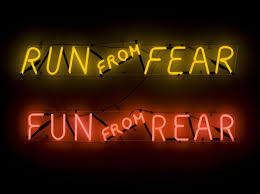
“Coffee Spilled Because the Cup was too Hot” is a photographic presentation that has framed the cup and the spill of coffee on the floor in a colourful manor. The image is of an ordinary occurrence, everyone has spilled coffee before, but Nauman has highlighted his own spill. I find this piece humorous and pushing the boundary of what we traditionally call art.
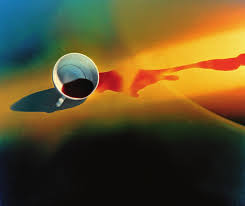
EXERCISE: A kilometre is a concept. Make a kilometre in any medium – photo, video, object, text etc. Post documentation and description of your kilometre on your blog page.
For this assignment I decided to think about the construct of a kilometer in terms of how a car engine describes a kilometer. Cars measure the output of gas whether in motion or stationary. There are censors that calculate how much fuel is left in the tank and how many kilometers you have before the tank is empty. For this reason, I measured my kilometer by sitting in the car in the exact same place. I took a photo of the gas level and idled the car until it read one kilometer less. It took about a minute or two. What I find interesting about this measurement though, is that it is so vastly variable. This same measurement could be taken at a high speed and the gauge would read a kilometer lower much faster although you may not have actually gone a full kilometer yet, you’ve just burned that amount of fuel.
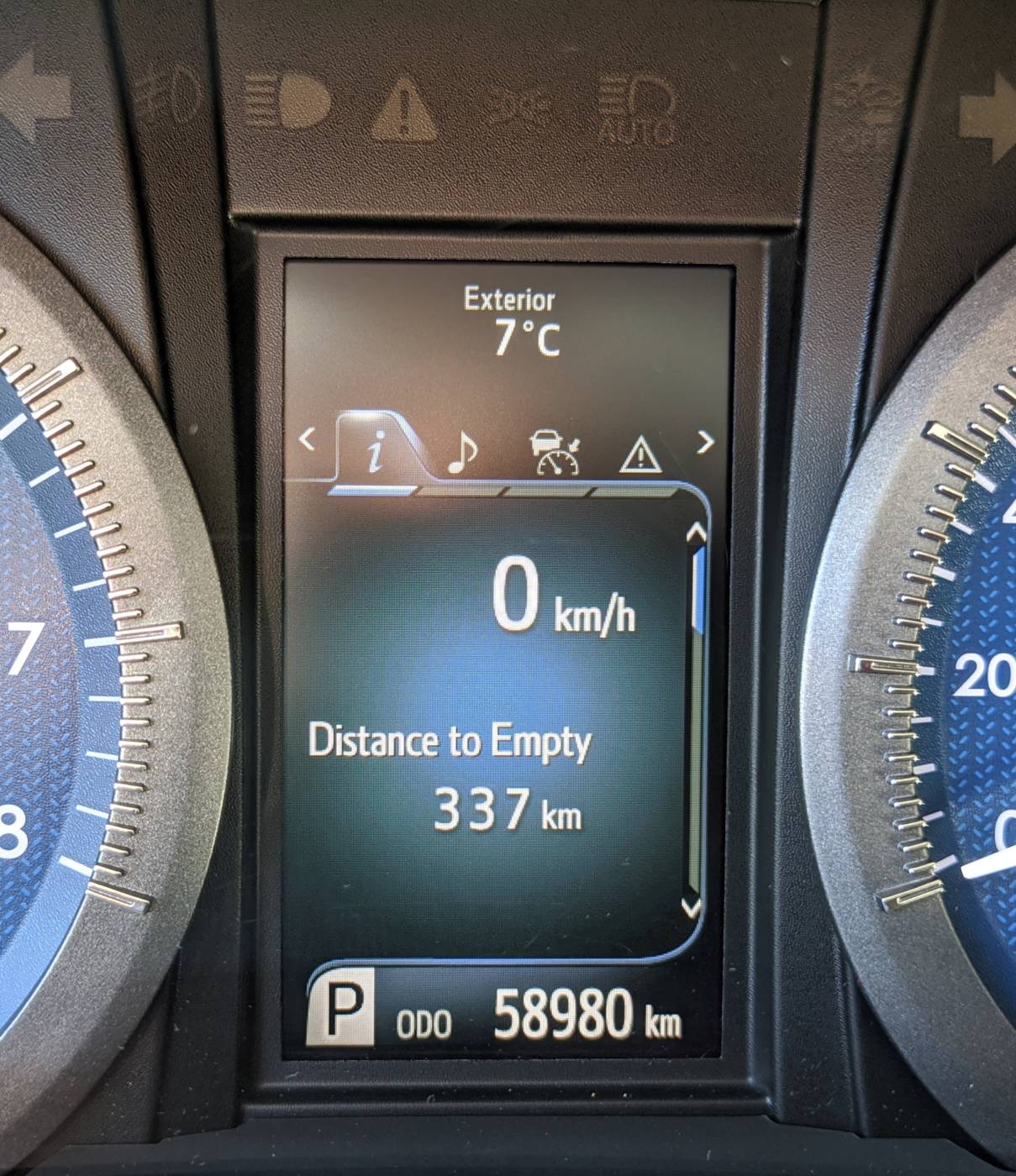

WEEK TWO
For my interpretation of Marina Abramovic’s work, I laid on my parents kitchen table with the overhead light very close to my body. The light is adjustable, so I pulled it down as far as it would go then laid flat underneath it for an hour. The whole process was strange and I giggled a few times because my sister was watching me do this. She studies at the dining room table with a clear sight to the kitchen table and this “event” so to speak was distracting.





As I laid there, I really thought about how food might feel were it an animate object. I felt like I was served for dinner. What if someone sat down and decided to bite my toe? What does it feel like to be the roast beef about to be carved for consumption? Or maybe with the light so close to me, like a piece of fried chicken or some other kind of fast food, under infrared light to be kept warm. Slowly drying out.
I also felt a bit like Frankenstein’s monster. Like I was going to have something about my person altered. Perhaps the close lighting and being on a table in the kitchen exacerbated the feeling of some DIY surgery. What would happen if you were awake for such a thing? What if a cold blooded killer happened to break in right at that moment and decide to fillet me? I felt very strangely exposed even though I was in my parents home where everything is familiar.
The act itself was kind of uncomfortable and awkward, especially being that I had an inadvertent audience. At the end of the process, I had my sister take photos of me for documentation. After reviewing the images I felt as though I was looking at a dead body, which was uncomfortable. I also happened to be wearing black which elevated that dark eerie feeling.
WEEK THREE
Making Changes, instructional sentence: Adjust the placement of random objects in the city, don’t move them far, or remove them.
Sitting, instructional sentence: Sit closely to patrons seated on benches.
Ladder Climb, instructional sentence: Ascend a ladder without anything to support it.
Dead End, Eastern Market, Detroit, instructional sentence: In a cargo van, locate a small ally way in which you must complete a full turnaround, complete in the smallest ally the van can fit.
45.9 Yards, 42 meters, instrctional sentence: Find a long driveway, observe a toddler walk up the driveway, measure the distance.
Several Observations, instructional sentence: Feel an object wrapped in bubble wrap, remove the object from the wrapping and feel it more.
Defenistrate an object
The item I chose to throw out of my apartment window was a Klean Kanteen. The reason for this choice is their claim… they say they are indestructible. So, naturally, I put this to the test. I filled the water bottle, screwed the cap on tight and gave it to my significant other to throw out of our second story bedroom window. The bottle itself stood up quite well to this test actually. I was surprised at only some small dents being made in the aluminium. The cap on the other hand was completely smashed and leaked all the water out all over the place.
I found it difficult to know if I actually captured the bottle falling. It felt like I was trying to search my image for a ghost. As the water bottle was a small one and it was thrown with some vigor the spin on it as it descended made the bottle just a metallic blur in the photos. There is one image of the back ground, one of the bottle in mid air, a few are of it once it hit the ground, and the final image is of the remains of the cap.






I’m not totally sure why this is art but it was kind of cathartic so, I suppose it doesn’t really matter.
WEEK FOUR
Write: Actively explore and think about the work of Adad Hannah.
The work of Adad Hannah is very interesting, I enjoy the idea of watching someone hold a pose that would normally be captured in an instant. His work reminds me a little bit of the Humans of New York blog with his approach. The way the images are set within the frame as well as how the individuals are interviewed are very similar. I enjoy that he went out into the community and made a point of connecting with people in a time when making connections is not easy.
I think that the weird in between time Hannah describes is a good way of describing the time we are all living in. We are all together going through this crisis, we each have our own lives going on and have our own routine’s we have developed in order to continue living in this new normal. I think that the way the images have been captured are quite lovely and personal feeling, he is respecting social distancing while creating these intimate images. They feel as though he was much closer and was having a personal conversation with his subjects.
I think the videos are kind of empowering and insightful. They seem to act as a way of bringing people together in a scary time. It’s interesting to see how people are making their way through the difficulties of every day life right now. There are people from all walks of life and all nationalities in his work. There are images of people safely being activists during the pandemic. There are images of people going outside to enjoy the outdoors. Each image is set within the frame the same way, right in the center of the frame, the background is out of focus and the subject in focus. When the pandemic began and this art work began it seems that Hannah was still adapting the structure of the images and how they would be described within the frame. Where later in this work the images are mostly of people standing and the images are set more similarly. I enjoy the evolution of the images and the time documentation. As you scroll through the images there’s the start, in the spring, before there were leaves on the trees and everything was very desolate and reflective of the fear everyone was feeling. Then as you scroll further there are images of people out enjoying parks and outdoor spaces and embracing what’s going on around them.
Exercise: Make a self-portrait or portrait of someone else in the style of Social Distancing Portraits. Post and describe your 1 minute video.
For this assignment I chose my models based on my own every day life. Right now I am homeschooling my aunt’s children three days a week while my mom helps out the other two. They are going to school synchronously online every day from 8:30 a.m. to 3:00 p.m. They have attendance taken, stand for “Oh Canada,” have their recesses and stretch breaks the same as they would at school.
This strange time is very scary for them and when speaking about the craziness that is currently going on we choose our words carefully so as not to exacerbate their fears. Sayge, 6, and Siena, 8, have become a part of my own routine with synchronous learning. Sayge sometimes sits in my lap while he listens to his teacher and I listen to my own instructor. This bizarre time has been stressful and sad. These kids can’t be with their friends, they can’t connect with their teachers in the same way and they are expected to sit in front of a screen for hours on end. On top of that, they are living with our grandmother while their house in Windsor is being built and their parents oversee the construction.
On the day I took the video the kids were participating in crazy hair day and were thrilled to be doing it. It was difficult to get them to stand still for one whole minute, Sayge had a very hard time with this. I think he’s the wiggliest little human I have ever met. Siena had an easier time with standing still and only cracked a grin while I filmed. Prior to taking the video I had told them the goal was for them to stand like statues for one minute and then they could go run around because it was a beautiful day and they were on recess.
WEEK SIX
WRITE: Describe a situation from your recent experience where not seeing faces has caused significant misunderstanding, confusion, or grief.
Recently my great grandmother passed away. She was a week shy of her 104th birthday. It is always unfortunate to attend a funeral however, during this unusual time it was particularly sad. Not many people came as there were strict regulations on the number of people who could be there. We all stood behind a taped line and the people coming to give their condolences had to remain behind another taped line in order to abide by social distancing regulations. We were only allowed within touching space of people we lived with or were in our social bubble. Anyone coming in we could only waved and speak to. It was difficult to recognize some people and it was very difficult to read the emotions on people’s faces. Was anyone sad? Were they angry? Were they content because she had lived a full life and died simply of age? Who knew!? In this regard I would have to say that wearing masks was taking away from a human exchange, the sharing of emotions over the loss of a loved one. My great grandmother was a pillar in our little community, she owned her own business and was acknowledged for her expertise in her field on more than a few occasions. It was sad to see only a smattering of people come out to pay respects for this woman who had been outfitting women in bras and lovely undergarments for 60 years. Many women from our little town had bought their first bra from my great grandmother when they were young girls and they had continues to purchase their undergarments from her for many many years. Any of these women that came to the funeral were had to recognize either from the disguise of old age or because of the face coverings we all are required to wear. It is difficult to understand grief when you cannot see the emotion on people’s faces. I think that the masks have made us all a little bit blind.
WRITE: Which of the faces discussed in the text were of particular interest to you and your experience? How do you think about these faces?
I am currently reading Boccaccio’s Decameron and have found some interesting connections between that book and Steinke’s article. She mentions a few different stories of plague and the masks worn with scented objects tucked into the beaks of the bird-like masks. In the Decameron the introduction describes people walking through the streets holding items of pleasant scent to their noses so as to avoid the stench of death and decay in the streets. I suppose what interests me here is that we in Canada have not had piles of people decaying in the streets however, in New York in April, people were dying from this virus so rapidly that they were forced to put the bodies into cooled 18 wheeler trucks so the smell could be avoided and because people were dying faster than graves could be dug. This is very similar to the Black Death that Boccaccio writes about in his Decameron. Steinke mentions different accounts though history of masks being worn and I appreciate the fact that we right now are living in a moment in history. I think that seeing a bird -like mask would be jarring and I don’t think I would want to get too close, they remind me of a gas mask.
WRITE: Who are you without your face? How is your experience different without your face in public? Can you imagine new ways to face the world?
One of the attributes about me that my boyfriend loves is how expressive I am with my face, he finds humor in it and likes knowing the excitement or frustration that I am feeling. I agree with Steinke in this regard that I don’t feel like myself with a mask on because I feel that I can’t express myself appropriately. Facial expression is a way of connecting with others and making them understand you. The faces you make are what give you your unique and characteristic lines which then become a part of how people identify you as you. I suppose then that without people being able to see my face I also don’t feel like myself. I feel like even just smiling to someone from behind a mask feels strange because they have to rely on your eyes to understand what your face is doing. Do your eyes then always convey what the rest of your face does? Or do we need to see the face as a whole to really understand? I think the thing I think about most is how my face does not necessarily matter in the grand scheme of things however, the face of a nurse in a children’s hospital, that face matters. Those children need to feel emotionally connected to their health care team and need to feel safe and encouraged. Not being able to see their faces is jarring and impersonal. So, yes I feel less like myself when half my face is hidden by a mask but that said, I don’t think I feel as strange as some others might. Those who rely on making personal connections in their jobs I think would feel more strange than I do.
EXERCISE: Change your face three ways. Make up a new face, or a new way to hide your face. Make an alternative pandemic mask. Use your face as the base of a sculpture. Make your face into something that is not a face. Or that is someone else’s face. Be playful, and see how many ways you might explore your own face, and to think about faces in this moment.
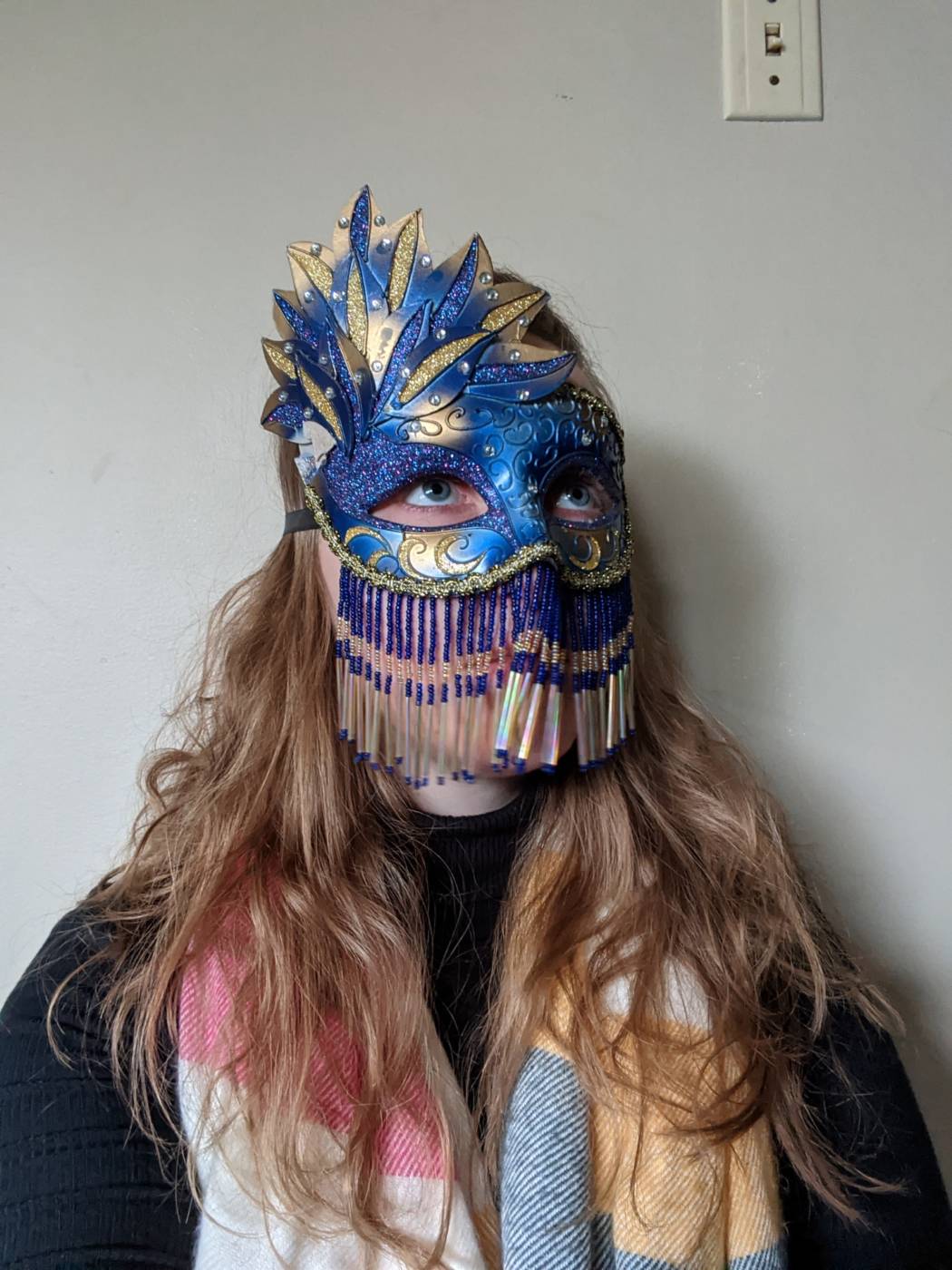
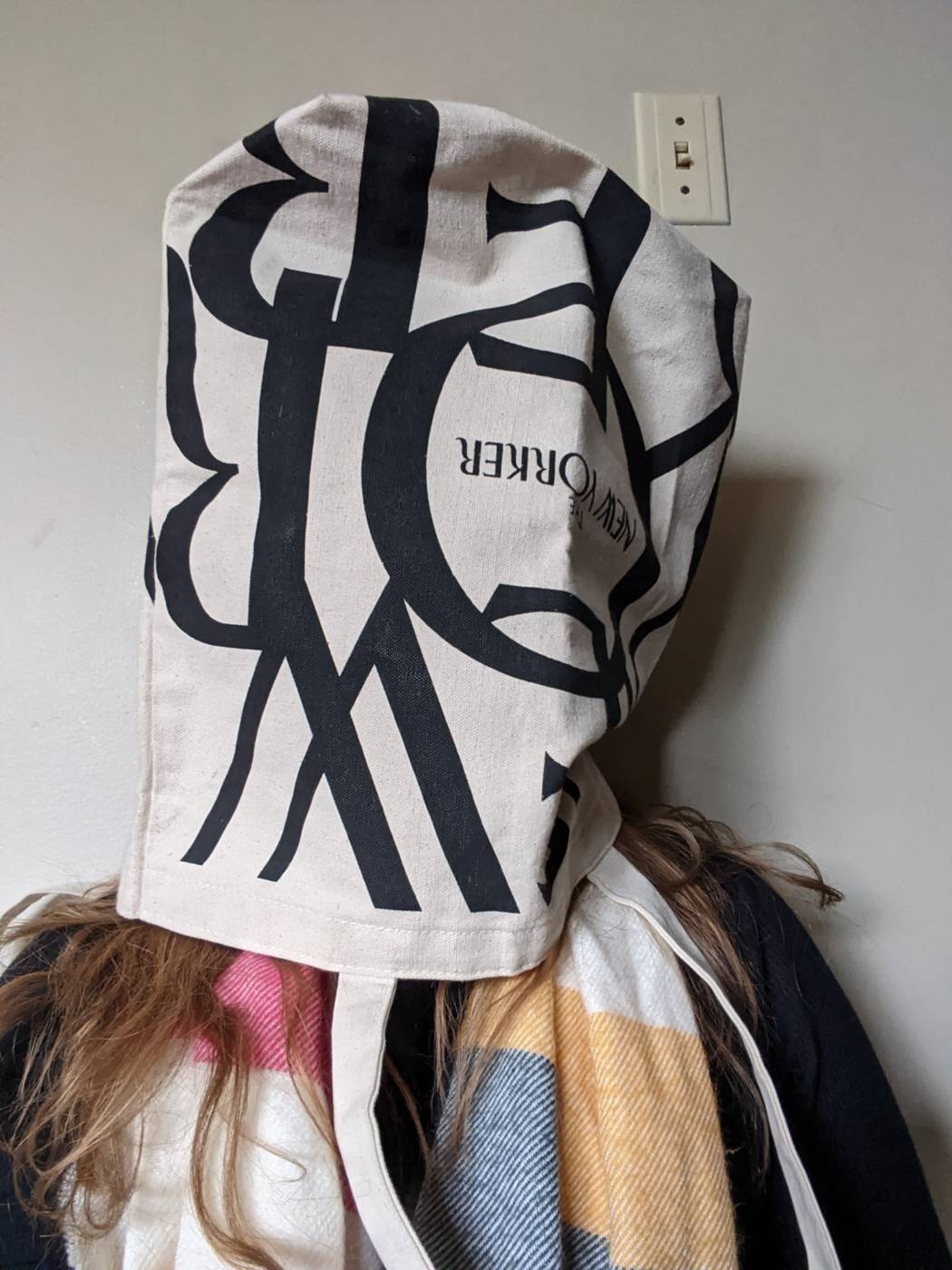
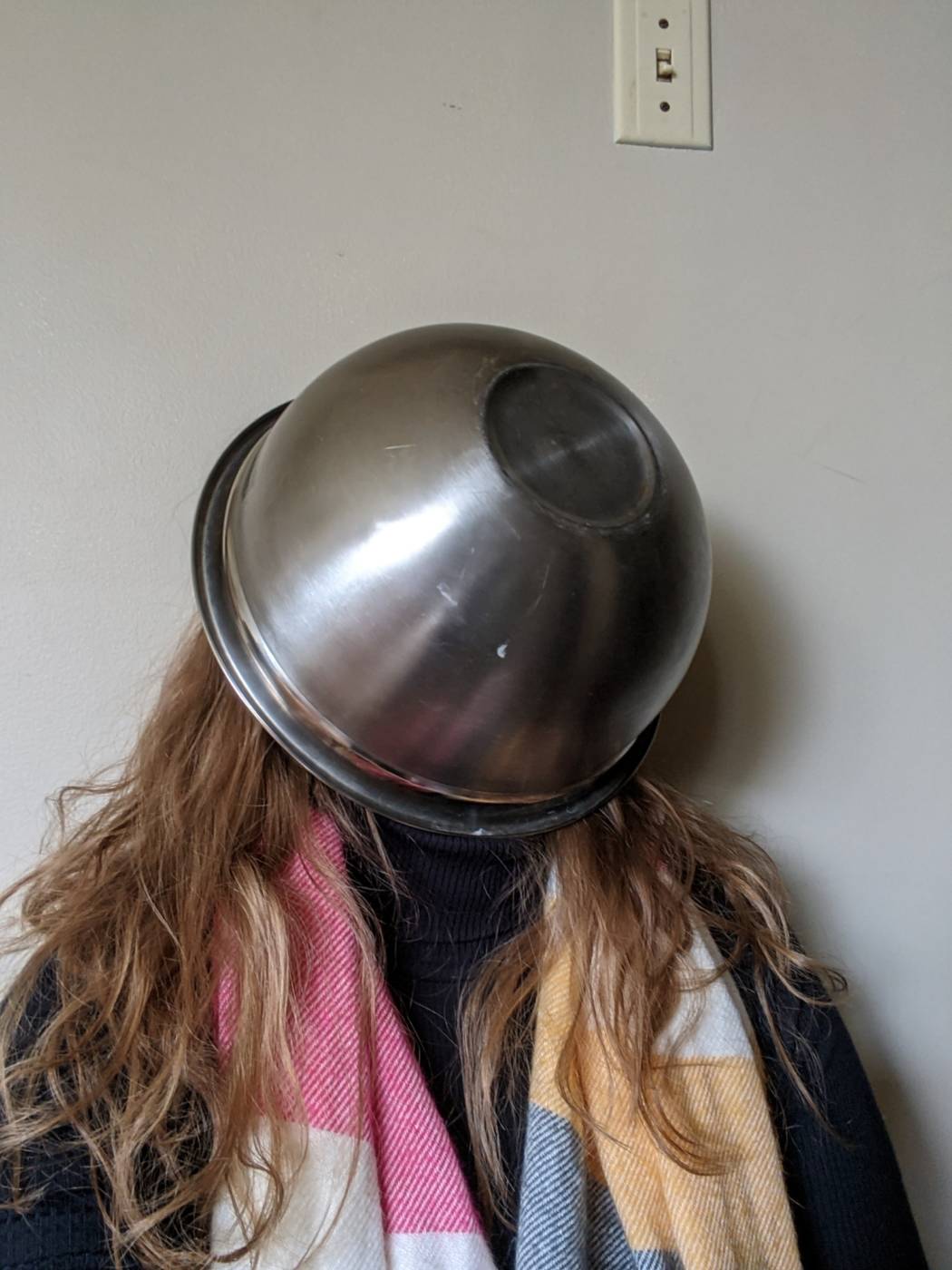
In these images I do not see myself, I cannot recognize my face. The first is a sort of costume, the second is a complete covering but made of canvas and is breathable, the last is also a complete covering and makes a sort of sculpture. For this project I tried a few different things covering my face, one was a candle in an attempt to make a parallel to people in the Decameron walking with scented things to avoid the stench of death. Another was my small pencil case unzipped and sitting vertically covering my nose and mouth and part of my forehead. I tried to make each image as similar as possible so I sat in the same position and used the light switch in the background as a means of centering myself in the same spot. My head was tilted the same way and I looked in a slightly upward direction in each photo even though you can only see my eyes in one of the images I have here.
WEEK SEVEN
WRITE: Select a total of THREE works from the Audio lecture, each by different artists, to describe and discuss in your notes. What were the conceptual prompts for each piece? How are these audio pieces different from conventional music, or scoring of films? How did the artists perform and resolve these ideas in the works? What are some of the strategies they used to maintain interest in listening to the works – how did the works use repetition and change over time? What is the effect of listening to the piece on you?
Kelly Mark
Horroridor, created for Nuit Blanche in 2008 is a sound piece that takes clips from movies of people screaming. This is not a movie nor is it music, it is entirely removed from any context that may aid us in placing it. Instead, the clips are forced together in a sort of collage of screaming horrors. To me, the idea was to hear the screams as noises the human body creates in a vast variety of scenarios. When do people scream and why? It was uncomfortable listening to screaming like that. As an experiment, I turned the volume up considerably and listened to it as I imagined it would have sounded in person, LOUD. I’m sure that most people came and went as the screaming loop played without standing and listening until the moment came back around from whence they arrived. Thus, the sounds would not often have been heard more than once by the same listeners which makes for an interesting display, seeing many different clips of many different people doing the same thing, screaming. The screams range in intensity and I’m sure range in meaning, from excitement to horror to panic to anger.

Marla Hlady
This interactive musical piece of art is quite a feet of engineering. Each way the “instruments” are turned and oscillated they make a different sound. This means that the sound is as individual and unique as the person who created it. To me, this piece is all about human interaction and experience. If these items were simply on display or even shown in use in a video they (the viewer) would not have the same pleasurable experience as they do being a part of the art and sound making. I think that having a “try-me” aspect makes the viewer experience much better and aids in the understanding of the work overall. Though the sounds are not music per se, they are musical and melodic and they play off each other when used at the same time creating interesting sounds. None of the sounds will ever be quite the same which makes this piece more encapsulating.

Emeka Ogboh
Ogboh uses the sounds of Lagos, his home, as a sort of back ground noise to what is to him, a quiet city (New York). I find the purpose of his music shocking, to me, New York is a bustling and noisy city no matter the time of day or night. However, according to Ogboh it is too quiet and he missed the sounds of home. He creates his city sounds as a means of reminiscing about his home in Lagos. These sounds he then shared with others who agreed that this helped them with this permanent state of quiet to which they were not accustomed. The sounds of Lagos are constant and ever changing, it is the music of the city.

PROPOSAL:
After listening to the work of Emeka Ogboh and his ambient city sounds I was inspired to listen to the ambient noise of my hometown. With Christmas coming soon and people out shopping the streets are bustling. It’s comforting to me knowing that people are staying local to do their shopping because they aren’t risking spreading this virus but also because my family’s small business is thriving. Seeing people in the streets means they are spending their time in small mom and pop shops, buying from local artists, and supporting families in our community.
I was also inspired by the work of Cevdet Erek who recreates the sounds of the ocean. My town is on the St. Laurence river which is quite an immense river, it filters in from the Ocean in the south east of Quebec and runs into the great lakes. I spent early mornings in high school out in rowing boats on the river and feel a calm connection with it.
I feel connected to the water that is a focal point of my town as well as the hustle and bustle that is the downtown that I have spent so much of my life in. My plan for my audio piece is then to record the hustle of the street while layering the lapping of the water in the harbor. Both of these sounds play on memory and familiar sounds. Both of these sounds are so integral of my experience of my hometown, but my experience is entirely different than any other individual’s experience would be. The only other person that could relate to these two sounds is my younger sister who also rowed and worked in our family business. She is the one I walked to practice with and the one I continue to walk along King street with.
In order to record the sound, I will walk from my family’s business at one end of King street to the bakery we get egg salad sandwiches from at the other end of King street. I will then layer over that with the sound of the water lapping against the docs in the harbor. I plan to use the sound of the water only during lulls in the street noise. The walk itself is about 2 minutes so I may look at speeding up the sound so that it fits in a one minute parameter. However, if the sounds are too mottled I may simply use a segment of the sounds of the walk.
The title of this piece will be: The Sounds of Home
I also read this article about sound artists:
https://news.artnet.com/art-world/12-sound-artists-changing-perception-art-587054
The Sounds of Home, audio art piece
WEEK TEN
Write:
Wow, the time commitment that some of these artists has committed to is immense! I could hardly imagine having one task like punching a time clock every hour on the hour for a year, what an incredible and bizarre accomplishment. I appreciate the imperfections in these tasks the artists have laid out for themselves, having a count of the number of times they did not complete the task which just shows the fallibility of man. To me this is like the artists hand being visible, like the brush strokes in a painting.
I also appreciated the portraits of boys and men named David. This makes me wonder what would happen if someone were to document everyone’s names like this. What if there were a catalog of names and portraits of the people that had the same name together in sections. What an immense collection that would be. I feel as though that may also have an affect on the way people select the names of their children. Perhaps they would go through these catalogues and see what names had on average the longest lives if this information were attached to the portraits.
Proposal:
I am intrigued by the documentation of people and things over time thus for my conceptual piece I will be examining all the places that I have lived. This examination will remove completely any emotional sentiments I may have to these places and be simply locations where at one time I existed. In order to remove emotion I will utilize google street views as my “camera.” This will put me in the position of an observer simply doing a task and nothing more. I have lived in 8 different residences in two different cities throughout my life. Each place has a certain image in my memory and that memory is entirely different from the way they appear in google street view. What I find interesting about this conceptual piece is that while these places have left a mark in my memory they have also been eternalized in the cyber sphere, meaning that in 10, 20, 30 years or maybe more, I will still be able to find these places even if they no longer have a physical or tangible place on earth.
WEEK ELEVEN
The following photos are google street view images I have collected of all the places where I have lived. They have been arranged in chronological order from where I first lived to where I currently live. The images were taken at varying times by google with the oldest image being from 2014 and the newest from 2020. The individual titles of the images are the same as the address labels from google that appear at the bottom of them.
59 James St W – My mother’s magnolia is still in the front yard here, my father planted it for her on her first mother’s day 24 years ago.
9230 Branch Rd – The barn that sat on the side yard of the property has since been torn down.
1107 Riverdale Cres – My grandmother now lives here alone.
61 James St E – I walked through the park to my high school every day for four years from this house.
Dundas Hall – I lived with 10 girls in an apartment in my first year here.
42 Oliver St – My twin bed barely fit in the tiny room I rented here.
81 Harvard Rd – I climbed through the downstairs bathroom window more times than I could count in this house.
40 Winters Crt – I moved “home” to this apartment with my little family.
While I have nostalgic sentiments toward these places, these images are sterile and have no memory associated to them which I find to be an interesting way of looking at them. There’s no cozy warm feeling attached, no mom and dad to go home to looking at them. By looking at them I can’t associate the smell of the fresh cut grass I associate with the house I grew up in or the waft of my mom’s cooking when you open the door to their house. These images have no attachments to me whatsoever, some random stranger whose job it is to document each house in each town took these photos and that makes them feel cold to me. I have photos of all of these places that have been taken with care by family and friends and those are the images of these locations that hold memories and nostalgic smells and warm sentiments. These images instead are simply a documentation of the places where at one time or another either for a short while or maybe a decade, I lived.








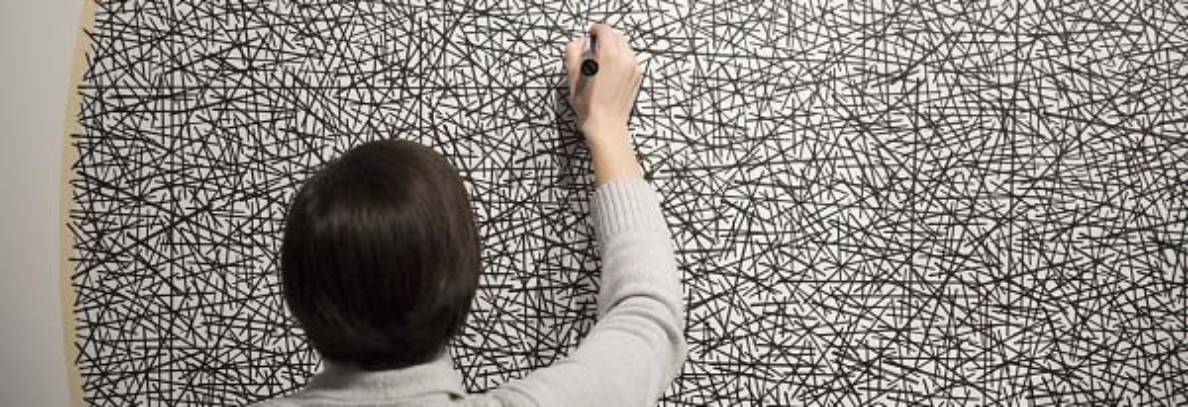
Domenica:
W1:
Notes on Sol Lewitt, Yoko Ono, Nauman complete and very good evidence of curiosity and engagement with material.
Kilometre image and description – seems related to conceptual practice, I like how you measured the kilometre using your car, to measure this distance precisely and how you documented it. Good absurdity/tension by going nowhere – but expressing a kilometere anyway, how our systems can be gamed and a kilometer is shown to be just an idea!
W2: Image of Abramovic/Stillness gesture, and description complete and a good idea, I appreciate you made yourself uncomfortable/challenged and even embarrassed – to create interest and meaning in the work– this is hilarious to emulate food, on the kitchen table! Also reminds me of surgery… I’d love to see this as a video, with all the ambient sound of a normal household going on, and you doing this absurd gesture. Wish there was a bit more reference to Abramovic – and a sense you were engaged with that material/ideas.
W3: 6 conceptual sentences are complete and get the idea – to write the simple formula for actions in each piece, as opposed to broader themes. Defenestration image and description are sort of banal, maybe something more messy, surprising, or that we want to see up the air? The canteen also just looks like it was found on the ground… no sense of “air”
W4: Could use a few more notes on Adad’s work to get his formula but I really like your Distancing video, of the kids on Crazy hair day! Clear, well lit and framed. Wish there was a quote from them too – as in Hannah’s work. Good you found a way to enlist them in your piece.
Good effort on these pieces, and great sense of humour, I’d love to see more of your works in class if you can get them in on time. Also go through and think about all the lecture materials and references as thoroughly as you can, there are a lot of good ideas there. Good work!
If you would like to talk with me about your work in progress, readings, exercises, one-on-one comments on your work, and grades – send me an email in the morning to book a 15 minute appointment during my office hours: Thursdays 1:30-3
And you can show up to a zoom meeting with Nathan anytime during these hours to ask your questions, and get tech support for using software and finishing your projects:
Mondays and Thursdays 1-4pm